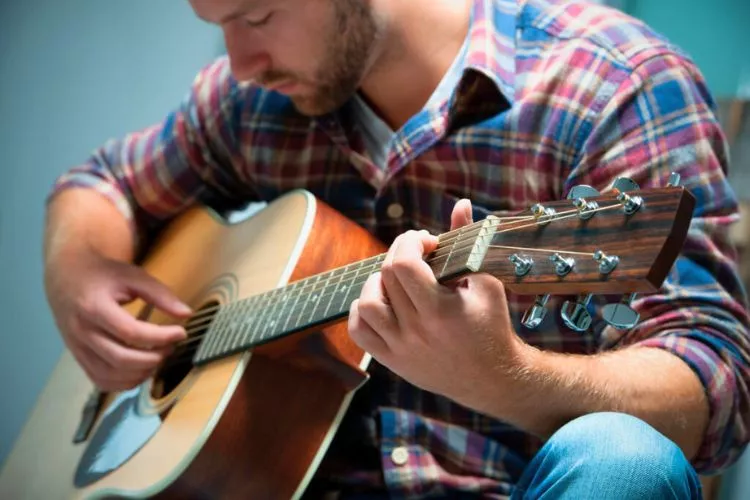Playing guitar is an art that requires skill, dedication, and practice. Beginners often struggle to develop speed and precision, and even experienced players can hit a plateau. So to help you, I have written a detailed guide on how to increase speed and precision in guitar.

With the right techniques and exercises, anyone can improve their guitar playing and take it to the next level.
This guide outlines effective methods of increasing speed and precision in guitar playing, featuring valuable insights from expert guitarists and pro tips to help you achieve your goals.
Contents
🎶How to Increase Speed and Precision in Guitar Playing
Playing guitar requires both speed and precision. Speed refers to the ability to play notes quickly, while precision refers to the accuracy and consistency of playing each note.
Speed and precision are important for different genres of music, from rock and metal to jazz and classical. If you want to be able to play complex solos, fast riffs, or intricate arpeggios, you need to develop your speed and precision.

This guide offers practical techniques and exercises for guitar players of all levels to enhance their speed and precision.
From building a strong foundation to mastering alternate picking and legato techniques, the guide covers essential methods that have been proven to work.
1. Building a Strong Foundation
Before you can improve your speed and precision, you need to have a strong foundation. Proper hand positioning and posture are crucial for avoiding injury and achieving optimal performance.
When holding the guitar, keep your back straight and avoid slouching. Support the guitar with your forearm and place your thumb behind the neck, providing stability and leverage.
Finger strength and dexterity exercises are important for building a strong foundation. Regular practice of finger exercises can improve finger strength, speed, and accuracy. Moreover, warming up before playing is essential to prepare your fingers and avoid injuries.
2. Alternate Picking Techniques
Alternate picking is a technique that involves alternating between upstroke and downstroke picking.
It is a common technique used in guitar playing and is essential for developing speed and precision. When practicing alternate picking, start slowly and gradually increase the tempo.
Start with simple scales and exercises and gradually move to more complex patterns. It is important to stay consistent and focused when practicing alternate picking, as it can be challenging to master.
3. Metronome Practice
Practicing with a metronome is an effective way of developing your speed and precision. A metronome is a tool that produces a steady beat, allowing you to play in time and accurately.
Playing with a metronome can help you improve your timing, rhythm, and coordination. When using a metronome, start with a low tempo and gradually increase it as you get comfortable.
4. Position Shifting and Fretboard Awareness
Position shifting refers to moving your hand along the fretboard to play different notes. Minimizing position shifts is important for developing fluidity and accuracy when playing.
You can practice position shifting by playing slowly and paying close attention to the movement of your hand. Another effective way of improving fluidity is by developing fretboard awareness.
This involves memorizing the notes and fret positions on the fretboard, allowing you to play without looking at your fingers.
5. Legato Technique for Speed and Fluidity
Legato is a technique of playing notes smoothly and fluidly, without plucking the strings with a pick. This technique can be used for playing fast runs and complex licks.
To develop legato technique, practice hammer-ons, pull-offs, and slides. Start with simple patterns and gradually increase the difficulty.
6. Music Theory for Guitarists
Understanding music theory can help you develop your guitar skills and improve your speed and precision.
Basic theory concepts such as scales, chords, and intervals are essential for developing proficiency. Learning how to read music notation and tablature can also be beneficial for improving your accuracy and precision.
7. Pro Tips from Expert Guitarists
Expert guitarists often have unique insights and techniques that can help you improve your speed and precision.
Some of the most common pro tips include practicing consistently, focusing on technique, playing with others, and experimenting with different genres and styles.
🎶Frequently Asked Questions (FAQs)
Improving your speed and precision requires consistent practice and dedication. Progress may vary from person to person, but with regular practice and proper techniques, significant improvement can be made in a matter of weeks or months.
Yes, anyone can improve their speed and precision with dedicated practice and proper techniques. It is important to practice regularly and focus on building a solid foundation of skills.
Practicing for at least 30 minutes a day can help you see improvements in your speed and precision. However, it is important to set realistic goals and practice consistently.
Yes, different genres of music require different techniques and approaches. It is important to choose exercises and techniques that are appropriate for the genre you are interested in.
Check this out also: Mandolin vs Guitar: Which One Is Easier to Learn?
Conclusion:
Improving speed and precision in guitar playing requires dedication, practice, and a solid foundation of skills. With the right techniques and exercises, anyone can develop proficiency and take their playing to the next level.
By following this guide and implementing the techniques and exercises shared, you can improve your guitar playing and achieve your goals.
